Photo Credit: A.Davey
Have you ever wondered what that incredibly strange-looking, supposedly-edible thing at your neighborhood market is? Or wandered into a restaurant for an almuerzo and been offered a juice of some exotic-sounding fruit you’ve never heard of? Well, no more! With this easy-to-use guide, complete with pictures, your knowledge of Ecuador’s fruits and vegetables will rival that of the locals. You’ll never fear the produce stalls again.
Achocha
Known as stuffing cucumber in English, the mature fruits are eaten cooked, raw in salads, or pickled. For soups, the achocha’s seeds are removed and it is cooked along with other vegetables and spices. The achocha has a subtle flavor, similar to a cucumber. The fruit has a large cavity in which the seeds develop, and this can be filled with other foods to make typical Spanish dishes. The young shoots and leaves may also be eaten as greens.
Achotillo
Known as rambutan in English, this fruit’s flesh is translucent, whitish, or very pale pink, with a sweet, mildly acidic flavor reminiscent of grapes. It can be eaten by itself, but is commonly used to flavor candies and juices.
Babaco
A cousin of the papaya, the babaco is a seedless fruit, and entirely edible. Even the smooth skin can be eaten. It is said to have a flavor similar to that of strawberry, papaya, kiwi, and pineapple. Like the papaya, the babaco is grown for its edible fruit and for its juice.
Borojo
One of the few of the Rubiaceae family that has edible fruit, borojo is grown in areas of high humidity and temperature. Each fruit has 90 to 640 seeds. Borojo has high levels of protein, vitamin C, calcium, iron, and very high levels of phosphorus. Borojo is used in the preparation of jam, wine, desserts, and traditional medicines with supposed aphrodisiac effects. It is also used by the local communities against hypertension, bronchial diseases and malnutrition.
Chirimoy
Known as custard apple in English, Mark Twain called the chirimoya “the most delicious fruit known to man.” Some characterize the fruit’s flavor as a blend of banana, pineapple, papaya, peach, and strawberry. It can be chilled and eaten with a spoon, which has earned it another nickname: the ice cream fruit. When the fruit is soft and still has its fully-mature green-yellow skin color, the texture is like that of a soft pear or papaya. If the skin is allowed to turn brown but the flesh has not fermented or gone bad, the texture can be custard-like. The seeds are poisonous if crushed open, and an extract of the bark can induce paralysis if injected.
Granadilla
Known as sweet passion fruit in English, the outer shell of this fruit is hard and has soft padding on the interior to protect the seeds. The seeds, which are hard and black, are surrounded by a gelatinous sphere of transparent pulp. The pulp is the edible part of the fruit and has a soft sweet taste. It is very aromatic and contains vitamins A, C, and K, phosphorus, iron, and calcium.
Guaba
Known as inga in English and commonly known as the “ice-cream-bean,” the seeds of this fruit are covered with a sweet white powder. The pulp covering the seeds is lightly fibrous and sweet, and rich in minerals. It is edible in the raw state.
Guanabana
Known in English as soursop, this fruit is widely promoted (sometimes as “graviola”) as an alternative cancer treatment. There is, however, no medical evidence that it is effective. The pulp is also used to make fruit nectar, smoothies, fruit juice, as well as candies, sorbets, and ice cream flavorings.
Guayaba
Known as guava in English, in many countries it is eaten raw, typically cut into quarters or eaten like an apple. In other countries it is eaten with a pinch of salt and pepper, cayenne powder, or a mix of spices. Guava juice is also popular. The fruit is also often prepared in fruit salads. Because of its high level of pectin, guavas are extensively used to make candies, preserves, jellies, jams, and marmalades. Guavas are rich in dietary fiber and vitamin C, with moderate levels of folic acid. In fact, a single guava fruit contains about four times the amount of vitamin C as an orange.[/color-box]
Guineo Orito
Similar to, but smaller in size than, a banana.
Habas
Known as broad beans in English, preparation involves first removing the beans from their pods and then parboiling them to loosen their exterior coating, which is removed before cooking. The beans can be fried, which causes their skins to split open, and salted and spiced to produce a savory, crunchy snack. They are eaten, fresh or dried, in stews and toasted, boiled, roasted, etc.
Jamaica
Tea made from hibiscus flower buds has many medicinal properties including reducing high blood pressure. It is also high in minerals and especially recommended during pregnancy, as it is believed to support labor and help speed delivery.
Kaki
Known as persimmon in English, these fruits are harvested and used in a variety of dessert dishes, especially pies. They can be used in cookies, cakes, puddings, salads, curries, and as a topping for breakfast cereal.
Maracuyá
Known as passion fruit in English, this fruit has a variety of uses as a whole fruit and juice.
Melloco
Known as ulluco in English, the melloco is one of the most widely grown and economically-important root crops in the Andean region of South America. Because of its high water content, ulluco is not suitable for frying or baking, but it can be cooked in many other ways like the potato.
Naranjilla
Known as “little orange” in English, this fruit has a citrus flavour sometimes described as a combination of rhubarb and lime. The juice of the naranjilla is green and is often used as a drink.[/color-box]
Noni
Known as cheese fruit or even vomit fruit because of its pungent odour when ripening. The noni tree is in the coffee family, and the fruits are used in juices and have been promoted as a cure for a number of diseases. However, there is no evidence to support these claims.
Oca
Known as New Zealand yam in English, oca is not, in fact, a true yam. Grown primarily by Quechua and Aymara farmers, oca has been a staple of rural Andean diets for centuries. Oca is important to local food security because of its role in crop rotations and its high nutritional content. Oca is one of the highest vegetable sources of carbohydrates and energy. They are a good source of pro-vitamin A (beta carotene), and also contain potassium, vitamin B6, and small amounts of fiber.
Pepino dulce
Known as sweet cucumber in English, the pepino dulce resembles a melon in color and its flavor recalls a mixture of honeydew and cucumber. Thus, it is also sometimes called pepino melón or melon pear, but pepinos are only very distantly related to melons and pears. Delicate and mild-flavored, pepinos are often eaten as a fresh snack fruit, though they combine very well with a number of other fruits as well.
Pitahaya
Known as the dragon fruit in English, this fruit’s texture is sometimes likened to that of the kiwi because of its black, crunchy seeds. The flesh, which is eaten raw, is mildly sweet and low in calories. The seeds are eaten together with the flesh, have a nutty taste and are rich in lipids, but they are undigestible unless chewed. The fruit is also commonly converted into juice or wine, or used to flavor other beverages. The flowers can be eaten or steeped as tea. The skin is not eaten.
Sapote
These orange-yellow fruit are soft, juicy, sweet and contain 2-5 seeds. They are usually eaten out of hand, though may be juiced.
Tocte
Known as the Ecuadorian walnut or Andean walnut.
Tomate de Árbol or Tamarillo
Known as tree tomato in English, the flesh of this fruit has a firm texture and contains more and larger seeds than a common tomato. The fruits are very high in vitamins and iron and low in calories (only about 40 calories per fruit). The fruit is eaten by scooping the flesh from a halved fruit. When lightly sugared and cooled, the flesh is used for a breakfast dish. Some people cut the fruit in half, scoop out the pulpy flesh and spread it on toast for breakfast.
Fresh tamarillos are frequently blended together with water and sugar to make a juice or are blended with chili peppers to make a hot sauce commonly consumed with local dishes of the Andean region. The sauce is simply referred to as “ají” and is present at every meal in Ecuador.
Tuna
Known as the cactus fruit or prickly pear in English. Full of antioxidants, it is eaten raw or cooked and is used to make juice, jelly, candy, and even flour.
Uvilla
Known as Cape Gooseberry in English. The uvilla is more distantly related to a large number of edible plants, including tomatoes, eggplants, potatoes and other members of the nightshade family. Uvillas are low in calories and contain moderate levels of vitamin C, thiamin, and niacin. Like a tomato, they contain numerous small seeds. Uvillas are sweet when ripe, with a characteristic mildly tart flavor, making them ideal for snacks, pies, or jams.
Sidenote – you might be lucky to have these self-propogate in your Cuenca garden thanks to the birds that enjoy eating (and disposing) of these tasty treats.
Yuca
Known as cassava in English, yuca is the third largest source of carbohydrates in the tropics, after rice and maize. Yuca can be cooked in many ways. The soft-boiled root has a delicate flavor and can replace boiled potatoes as an accompaniment for meat dishes, or made into purées, dumplings, soups, stews, gravies, etc. Deep-fried (after boiling or steaming), it can replace fried potatoes. It can also be made into a flour that is used in breads, cakes and cookies.
Zambo
Known as the Fig-Leaf Gourd in English. Eating this melon is said to help people with diabetes. Several scientific studies have confirmed its hypoglycemic effect. It is used effectively to treat diabetes due to its high D-Chiro-Inositol content. Because of its ability to keep for a long time, the ripe fruit was taken on voyages on ships, and used for food for livestock.
The immature fruit is eaten cooked, while the mature fruit is sweet and used to make confectionery and beverages, sometimes alcoholic. The fruit is low in beta-carotene, as can be seen from its white flesh, and is relatively low in vitamins and minerals, and moderately high in carbohydrates. This squash is used to make jams, pie filling, and soup.
Zapallo or Calabaza
Known as a squash in English, it is eaten many different ways, such as in stews, cakes, and candies. Some recipes that call for pumpkin allow calabaza to be used in its place. The taste is smooth and somewhat sweet. Calabaza is a good source of beta-carotene.
Final words
Shopping at the markets is not only fun, but it’s also one of the easiest ways to lower your weekly grocery bill. And, don’t be afraid to ask for a ‘yapa’ – a little bonus like an extra apple. This is where our name YapaTree comes from.
Happy shopping!



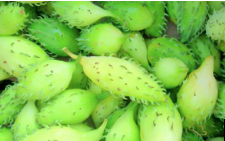


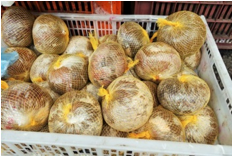
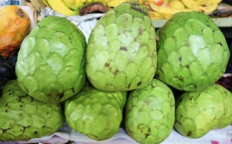
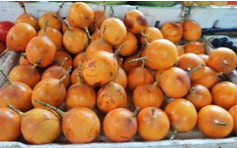



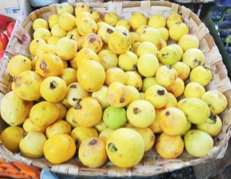
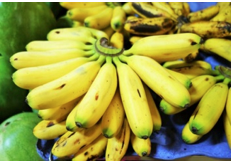
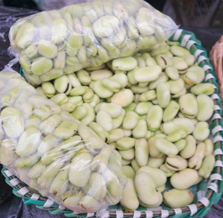
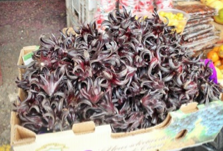
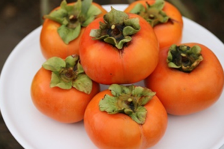
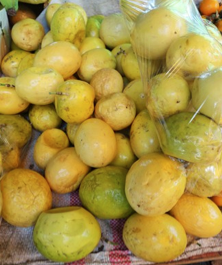

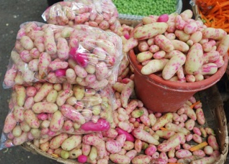
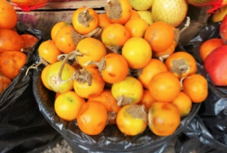
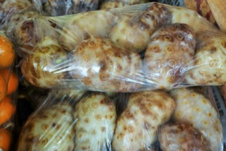
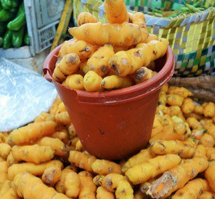
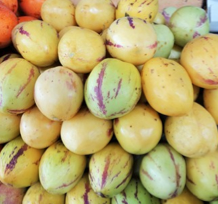
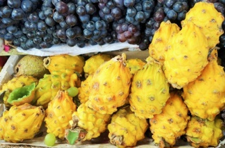
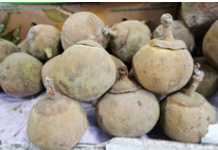
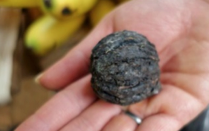
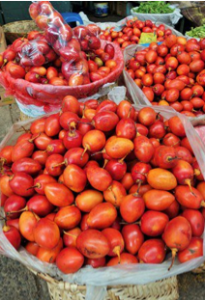

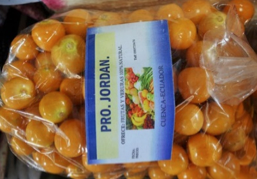


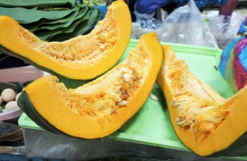
















5 Responses
Buena información. Gracias.
Thank you for such a useful and interesting article. I will be trying the ones I have not utilized before.
VERY helpful!
I’m going to work my way through this list! I recently started working remotely and learning Spanish in Cuenca and I find food is a great way to converse with people. Love your blog, and all the hiking advice. Thanks for sharing 🙂
Good info. Thanks